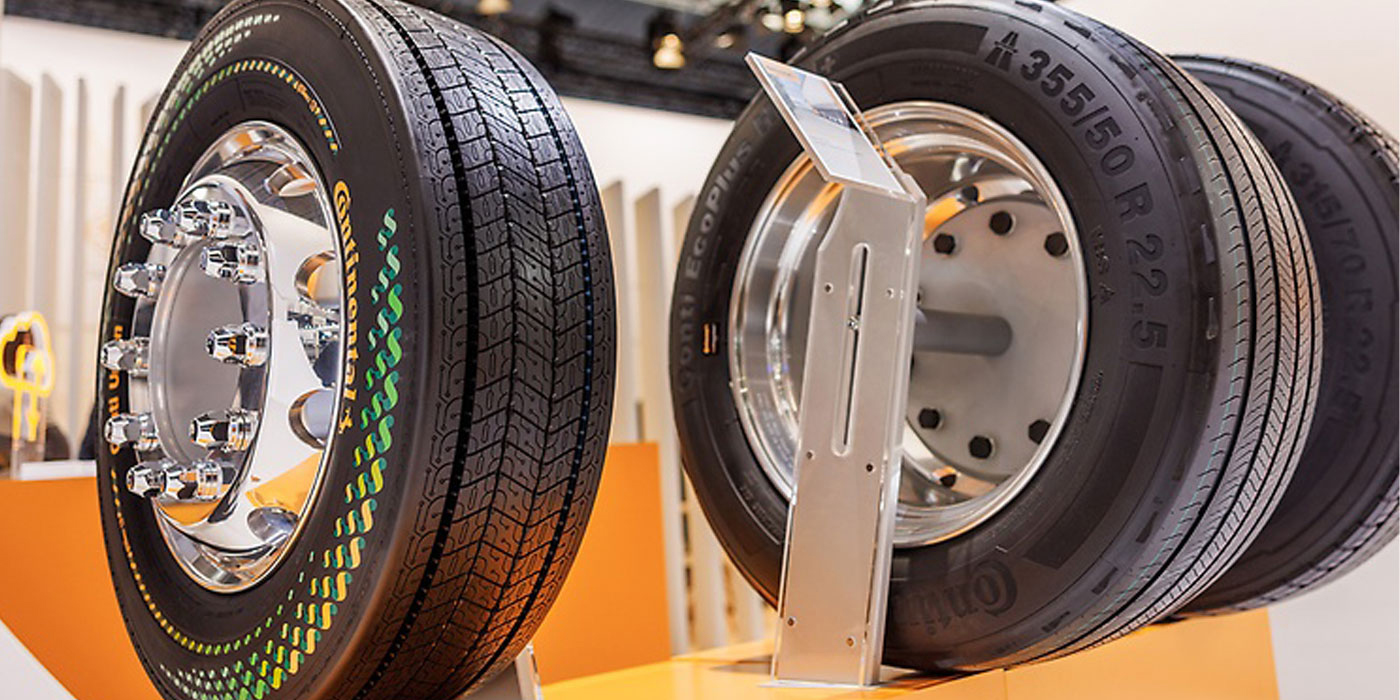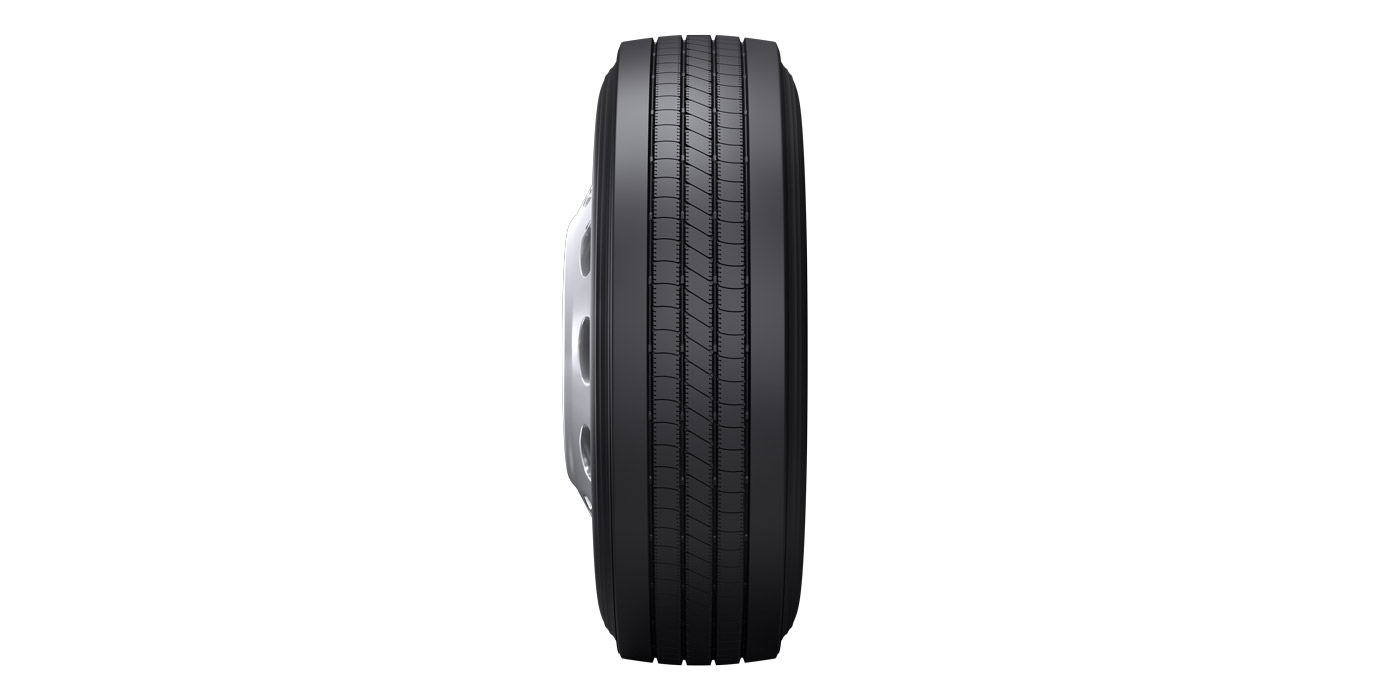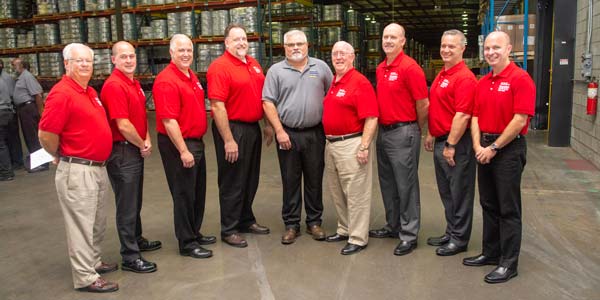State of The Union
Low Cost Radials, consolidations, Economy Hurting Retread Industry
Developing a forecast for the tire and retread industries for this year has been like trying to forecast the stock market. I can only hope that my industry forecast and report will be more accurate than my stock market judgments over the last 12 months.
Like nearly every industry in the world today, the tire industry continues to experience its share of mergers and buyouts, or to put it in the popular term of the day – strategic alliances. It’s sometimes difficult for me to determine the difference between a "strategic alliance" and buyout, merger or takeover. No matter the terminology, the outcome is usually the same.
In both January and November 2000, some tire manufacturers announced price increases in the range of 3% to 8% on certain tire lines. Nevertheless, we are still seeing some very low prices, especially with regard to new truck tires.
New tire shortages common throughout 1999 and 2000 became a thing of the past after the manufacturers cranked up production and substantially increased inventory. Some companies then announced layoffs and slowed production to avoid or reduce the price cuts that usually occur when inventories become heavy.
For the most part, retreaders were not able to raise their prices during the past 12 months. Although a few did announce increases, they found that competition within the industry made the adjustment difficult.
We continually receive calls at the ITRA from dealers who are interested in starting tire leasing programs for commercial customers. It appears, though, that until an affordable tire chip technology is available for monitoring purposes, growth in tire leasing will be limited.
The number of trucks operating under lease agreements is increasing as more smaller fleets opt to lease rather than own commercial vehicles. In some cases, the lease agreements allow the companies operating the vehicles to buy their own tires.
Michelin Retread Technologies Inc. (MRTI) has expanded throughout the U.S. to a total of 44 operating plants. The majority produce precure retreads, although several are designed for mold cure.
The merger of Goodyear’s commercial tire centers and Treadco Inc., creating Wingfoot Commercial Tire Systems, substantially increased Goodyear’s network of commercial tire dealerships. Combined, the commercial operations of Goodyear, Brad Ragan and Treadco total 194 outlets with 77 retread plants, and estimated sales of $650 million.
Bandag remains the dominant retread system in the U.S. with 393 plants in its franchise system. This accounts for 35% of all retread plants in the U.S.
Bridgestone/Firestone’s (BFS) massive 6.5 million tire recall had a tremendous negative effect on BFS and the Firestone brand name, and it left other tire and retread manufacturers wondering what the legislative response will mean to the tire industry in the future.
The TREAD Act, which Congress passed in response to the recall, established severe penalties for failure to report any problems associated with tire performance. The law also instructs the National Highway Traffic Safety Administration (NHTSA) to set new guidelines and rules for testing and recordkeeping of tire production and performance.
The requirement of a tire pressure monitoring system on all vehicles in the near future will be a major part of the new guidelines, but we can only speculate on the final outcome of what rules NHTSA will establish.
The legal situation between Bandag and Michelin remains no closer to resolution than it was a year ago. However, Michelin added BFS to its suit against Bandag, claiming the two companies colluded to prevent Michelin’s entry to the retread market.
While the case isn’t scheduled to go to trial until 2002 at the earliest, I suspect that any legal judgment in this case could have a profound impact on both retreading and new tire distribution.
A number of other important events occurred in 2000 that had an impact on the industry, including Marangoni North America expanding its RingTread system to eight North American plants, Maine Commercial Tire becoming the first U.S. retreader earning ISO9000 certification, Bandag opening an 84,000-square-foot learning center, and Executive Order 13149 reaffirming the federal government’s commitment to using retreaded tires.
Replacement Tire Sales
New replacement tire sales in 2000 exceeded sales in 1999 in nearly every category. Replacement passenger tire sales are expected to reach 202.8 million units in 2000, up from 191.5 million in 1999. Projected sales for 2001 are 198 million units.
Light truck/SUV tire replacement sales increased from 33 million units in 1999 to 34 million units last year. Due to the rising popularity of light trucks and SUVs, the category is expected to increase in 2001.
Medium truck tire replacement sales increased from 14.2 million in 1999 to 15.1 million in 2000. Sales are expected to increase slightly to 15.3 million units in 2001. Used truck overstock and continued poor economic conditions could impact the final shipment numbers.
OE Tire Sales
OE passenger tire sales increased to 61.5 million units in 2000 from 61 million in 1999. A drop to 59 million units is expected in 2001. Light truck/SUV OE tire sales in 2000 came in at about 7.7 million, down from 8.3 million in 1999. This number is expected to drop again slightly in 2001 to 7.6 million units.
Medium truck OE tire sales also experienced a decline in 2000, down to 5.1 million units in 2000 from 1999’s 6.1 million units. An additional decline to 4.3 million units is expected in 2001.
A sharp drop in sales of Class 6 through 8 trucks in the last quarter of 2000, and a declining market for new passenger vehicles are responsible for the anticipated drop in OE tire shipments.
Retread Plants
The total number of operating retread plants in the U.S. continued to decline. Through Dec. 1, 2000, there were only 1,123 plants, compared to 1,231 by the end of 1999.
Some plants closed due to management decisions to not upgrade equipment or expand facilities. Others closures occurred as companies with multiple retread plants consolidated their production into fewer facilities.
Of the 1,123 active retread plants in the U.S., 347 are owned by 63 different companies. Four companies – Bandag, Goodyear and Michelin – own 158 or 14% of the total number of plants. Only about 35% of U.S. retread plants are completely independent and are not operating under franchise or tire manufacturer involvement.
In terms of states with the most active retread plants, California leads the way with 93, followed by Pennsylvania with 65, Texas with 60, North Carolina with 55, Ohio with 53, Florida with 46, Georgia with 41, Virginia with 35, Illinois with 33, and Tennessee with 32.
Prices for raw materials across the retread industry held firm in 2000, despite rising oil and natural rubber costs. Going into 2001, some tread stock suppliers have already increased prices.
Concern is mounting, however, that if oil prices continue to escalate, there may be further adjustments later this year.
The strong U.S. dollar has encouraged the importation of tread rubber and equipment from Canada, South Korea, Brazil, Mexico and Malaysia. These imports tended to ease price increases throughout 2000.
Passenger Retreading
Passenger tire retreading in the U.S. continued its downward tread in 2000. Estimated 2000 production was 950,000 units, well down from 1999’s 1.9 million production.
The news will not be better in 2001, with passenger tire retread production expected to drop to some 760,000 units in 2001.
Many large passenger tire retreading operations have ceased production. This can be attributed to all-season tire sales dramatically reducing the demand for snow tires, once the major element of the passenger retread market.
Most companies that still retread passenger tires, however, seem to have little difficulty marketing their products and report customer acceptance is good.
Light Truck Retreading
Although retreading all-steel light truck tires seems on the increase, overall the number of retread units produced is declining. In 2000, an estimated 5.7 million units were produced, down from 6.1 million in 1999. This figure is expected to drop further in 2001 to 5.5 million units.
The continued reduction in the price of new fabric-based radial light truck tires has had a negative impact on retreading; when worn many of these type of tires are not considered retreadable.
A bright spot in light truck tire retreading is that the LT195/75R14 used by the U.S. Postal Service is being retreaded in substantial numbers throughout the U.S.
Medium Truck Tire Retreading
The number of medium truck tires retreaded in 2000 also dropped substantially, down to 16.5 million units compared to 17.4 million units in 1999. It is estimated that production could increase slightly in 2001 to 16.7 million units.
A major area of decline in medium truck tire retreading is the intermodal industry. More intermodal fleets are using new tires imported from China and India. It remains to be seen whether this trend will continue.
The switch from 10.00-20 bias tires to 22.5 radials will be a slow process. By the time this becomes a major factor, the price of imported new radial tires may be low enough that it will further erode the intermodal retread tire market.
On the other hand, if these radial tires become more retreadable for these operations, intermodal retreading could experience an increase.
Many truck fleets continue to dispose of tires that are only four and five years old, regardless of their condition. This practice reduces the number of tires available for retreading.
There is a positive development in medium truck tire retreading – casing prices began to decline in late 2000 to a more reasonable level.
OTR Tire Retreading
In 2000, earthmover tire retreading was down approximately 2% compared to 1999, with 475,300 units produced vs. 485,000 the previous year. This market is projected to remain flat in 2001, with production estimated at 475,300 units.
In late 2000, there was a noticeable reduction in new housing starts in many areas of the country, usually a fairly good indicator of a decline in some earthmover and quarry operations.
Low cost new tires continue to impact the OTR tire retreading market, especially in smaller tire sizes like 20.5 and 23.5. Many of these poor quality casings don’t lend themselves well to retreading.
Some U.S. OTR tire retread plants are realizing over 50% of their production is on radial casings. In many operations, these tires deliver more service hours than bias ply units and further reduce the number of units retreaded. As additional radial tires move into the OTR tire market and the service hours increase, we will likely see a rise in rejected casings as the longer-running tires will suffer more damage.
The industry is still finding that the majority of large haulage truck tires above 49 inches are not retreadable, although injury repair of these larger tires has been very successful.
Casing Supplies
Though there is little call for passenger casings, all-steel casings are the primary demand in the light truck category. There is still a significant need for retreadable casings in many medium truck tire sizes, the most popular being the 11R22.5, with demand for low profile 22.5 sizes increasing dramatically.
The availability of casings, both domestic and imported, has improved significantly. However, the need for 10.00-20 casings dropped substantially with the cutbacks in the intermodal retreading segment.
Casing prices continued to decline to more realistic levels. Some casings that commanded $80 to $85 each in late 1999 are now selling for $50.
Because there are fleets that pull their radial tires after only four or five years, the supply of retreadable casings will diminish. Although these tires are still usable in local or short-haul operations, many are scrapped before they can be considered for these applications.
I have examined rejected casings in many facilities, and, depending on the fleet, I sometimes find that nearly 50% of the rejects do not have a tire problem.
The main reason they are being scrapped is the fleet feels they are too old. Many of these scrapped tires are in perfect condition and have never been retreaded.
On the other hand, I also discover casings being retreaded that are not nearly as good as those rejected. In this case, those casings are being retreaded simply because they are less than five years old.
Retreading Equipment Sales
The sale of, U.S.-produced retreading equipment showed a substantial drop in 2000 as the vast majority of equipment is now being produced outside the country. In today’s economy, a considerable amount of buffers, inspection equipment and retread molds are being imported.
Section Repairing
Although many OTR tire retreaders are experiencing a decline in retread sales, they generally report that repairs are up. Part of this is due to the demand for repairing larger haulage and loader tires that may not be candidates for retreading, but are candidates for multiple repairs.
The quality of the repair materials and repair work continues to improve as repair manufacturers aggressively pursue their training efforts.
I believe that most repairable OTR tires are being repaired today because of the substantial cost to replace them. But I am still concerned that a tremendous number of repairable truck tires with very minor injuries or small punctures are being scrapped.
The major decline in the sales of new Class 6 through 8 trucks may have an impact on truck tire retreading and repairing as companies maintain their older units. Hopefully, operations will look at repairing and retreading more of their tires as cost-value alternatives to buying new tires.
I encourage all retreaders and commercial dealers with fleet customers reluctant to repair their tires to ask those customers to conduct a test with repaired tires. I believe the results will be very positive as fleets see the cost-value of repairing vs. scrapping.
In the meantime, dealers and retreaders need to continue increasing the amount and quality of tire repair training their people receive. The true cost-value benefit for customers lies in the quality of the repair.
Production Costs
Although retreaders face minor increases in the cost of raw materials and are enjoying reduced casing prices, they still must deal with the rising costs of operation. On average, labor costs increased from 2% to 4% annually over the last two years. I see little indication of any change in 2001, even with the current decrease in the employment rate. The exception is that some retreaders and dealers are finding it necessary to provide more pay and better benefits to reduce employee turnover.
Summary
It is very likely the worker shortage will continue in the retread industry, causing retreaders to develop innovative ways to maintain their work forces. This, along with increased overhead, equipment and fuel costs, will dramatically impact their ability to remain profitable.
Much of the equipment coming into the retread market today is more effective in allowing retreaders to cut production costs. However, the equipment is expensive and must be operated effectively to justify the cost.
Many plants have eliminated cementing from their processes, which can reduce production costs and fire hazards.
Casing inspection technology and equipment are improving, which can lead to reductions in the cost of in-plant failures.
While new retread plants are still opening on a regular basis, some of the older plants are closing. I expect the number of operating retread plants to drop to under 1,100 by the end of 2001.
There is little question that as long as the dollar remains strong, we will see more importation of equipment and raw materials for retreading – and more imported radial tires.
As this winter has seen heating oil shortages and high fuel prices, we should expect to see rising costs for carbon black and raw materials for tread rubber through 2001.
And, last but not least, the recent spate of tire recalls, liability suits and NHTSA investigations is likely to bring federal regulations that will require the purchase of testing equipment and establish procedures that will make times difficult more for the tire and retreading industries.
This report on the state of the U.S. retreading industry first appeared in the December 2000 issue of Tire Retreading and Repair Journal, and has been updated to reflect market changes since its original publication. – Ed.













